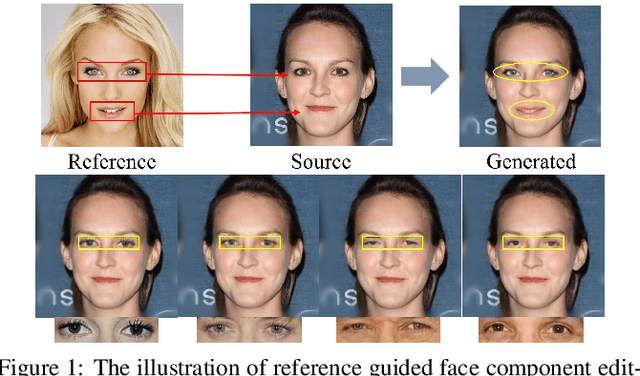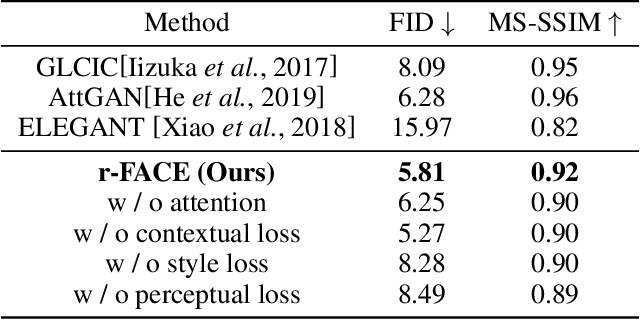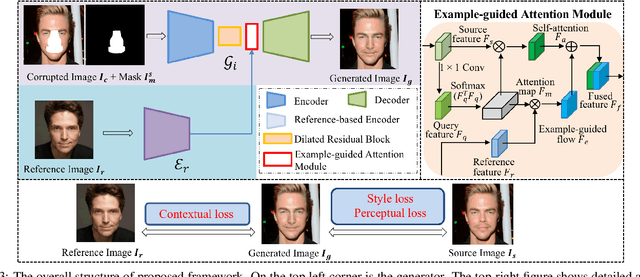Reference Guided Face Component Editing
Paper and Code
Jun 03, 2020



Face portrait editing has achieved great progress in recent years. However, previous methods either 1) operate on pre-defined face attributes, lacking the flexibility of controlling shapes of high-level semantic facial components (e.g., eyes, nose, mouth), or 2) take manually edited mask or sketch as an intermediate representation for observable changes, but such additional input usually requires extra efforts to obtain. To break the limitations (e.g. shape, mask or sketch) of the existing methods, we propose a novel framework termed r-FACE (Reference Guided FAce Component Editing) for diverse and controllable face component editing with geometric changes. Specifically, r-FACE takes an image inpainting model as the backbone, utilizing reference images as conditions for controlling the shape of face components. In order to encourage the framework to concentrate on the target face components, an example-guided attention module is designed to fuse attention features and the target face component features extracted from the reference image. Both qualitative and quantitative results demonstrate that our model is superior to existing literature.
 Add to Chrome
Add to Chrome Add to Firefox
Add to Firefox Add to Edge
Add to Edge